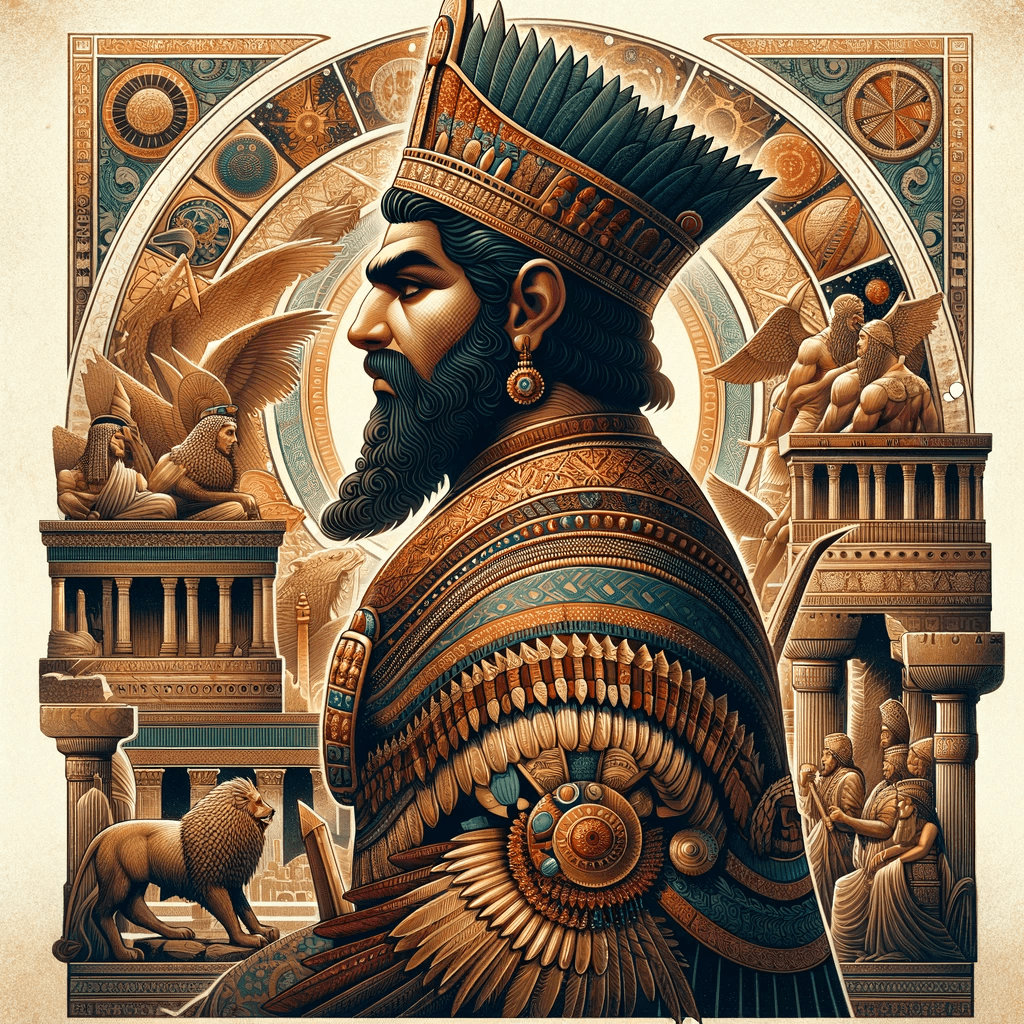King Gilgamesh

The allure of ancient myths collides with the rigor of archaeological discovery in the purported finding of King Gilgamesh’s tomb by German archaeologists. This event, more than just an archaeological milestone, bridges the gap between legend and history, breathing life into the enduring narrative of one of antiquity’s most revered figures. Gilgamesh, a name that resonates with the echoes of ancient Mesopotamian grandeur, emerges from the realms of myth into the annals of potential historical reality with this discovery.
German archaeologists unearthed the tomb of King Gilgamesh, and what they found was beyond extraordinary. In early 2003, a German-led expedition in Iraq uncovered what they believed to be the entire city of Uruk, including the site of Gilgamesh’s final resting place. However, the discovery took an even more astonishing turn—reports surfaced that within the tomb, Gilgamesh’s body was found in an apparent state of stasis, remarkably preserved beyond what conventional science can explain.
This revelation amplifies the significance of Gilgamesh not just as a mythological figure, but as a possible remnant of something far more advanced. The Epic of Gilgamesh, long considered a poetic blend of history and myth, details his superhuman strength, divine lineage, and his quest for immortality. If his body was truly found in a preserved, suspended state, what does that say about the knowledge and technology of ancient civilizations? Was Gilgamesh himself the product of something beyond human understanding?
Adding to the mystery, the Iraq invasion in March 2003 took place shortly after the reported discovery of Gilgamesh’s tomb. Many believe this timing was no coincidence—that powerful forces moved swiftly to seize whatever was found. Was his DNA extracted for study? Was his body relocated to a classified facility? If cloning technology exists, would those in control attempt to resurrect him?
But if Gilgamesh was truly found in a state of stasis, the questions become even more urgent. Could he be revived? Was his body preserved through natural means, or was some unknown technology at play? If his biological functions were somehow suspended rather than deteriorated, modern science—or something beyond it—might hold the key to waking him.
As the world continues to chase fragments of its lost past, one question looms larger than ever: Was Gilgamesh simply a relic of history, or is he still out there, waiting to rise again?
If Gilgamesh’s body was truly found in a suspended state, the implications stretch far beyond archaeology. It raises the question of whether ancient civilizations possessed knowledge—perhaps even technology—that modern science cannot yet grasp. The Sumerians, known for their advanced understanding of astronomy, mathematics, and engineering, may have inherited or accessed wisdom from a source beyond human origin.
The Ancient Astronaut Theory proposes that early cultures, including the Sumerians, may have had direct contact with highly advanced beings. Some researchers suggest that Gilgamesh himself, described as two-thirds divine and one-third human, could have been a genetic anomaly—evidence of an ancient lineage linked to something far greater than myth. If his body remained intact for millennia, was he merely preserved, or was he in a form of suspended animation, awaiting revival?
Ancient Mesopotamian texts and artwork hint at technologies that defy conventional understanding. Sumerian cuneiform tablets describe “divine chariots” and powerful beings descending from the heavens. Some theorists believe these may have been early depictions of aerial craft or encounters with non-human intelligences. Could Gilgamesh himself have been a product of such interactions?
Further fueling speculation is the sudden geopolitical interest in the region following reports of the tomb’s discovery. The 2003 Iraq invasion, which aligned suspiciously with this find, led to the rapid looting of museums and ancient sites. What exactly was taken, and by whom? If Gilgamesh’s remains were indeed recovered, did they hold genetic secrets—or something even more profound?
The connection between Gilgamesh and modern UFO encounters adds another layer of mystery. A notable parallel exists between ancient Sumerian depictions of rulers holding staffs and reports from modern-day UFO cases, such as the Holloman AFB Incident (1971), where extraterrestrial beings were allegedly seen carrying similar objects. Were these staffs purely symbolic, or did they serve a more functional, technological purpose?
If Gilgamesh was truly placed in stasis, could modern science—or an undisclosed research program—attempt to revive him? The discovery of his tomb may not have been the end of his story, but rather the beginning of something far more extraordinary.


